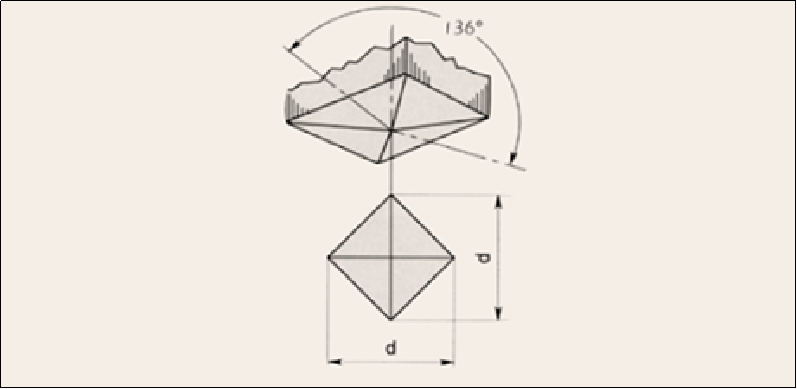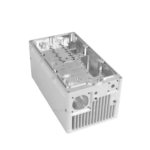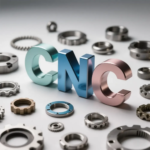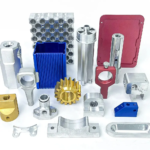Tools, measuring tools, molds, etc. used in mechanical manufacturing must have sufficient hardness to guarantee their performance and lifespan. Today I’m going to talk to you about topics related to “hardness”.
Hardness is a measure of a material’s ability to resist local deformation, including plastic deformation, indentation, or scratching. Generally, the harder the material, the better its resistance to wear. Mechanical parts such as gears require a certain hardness to ensure sufficient wear resistance and service life.
Hardness type
As shown in the picture above, there are many types of hardness… Today I will introduce the common and practical indentation hardness test in metal hardness.
Definition of hardness
1. Brinell Hardness/Brinell Hardness
The Brinell hardness test method (symbol HB) is the first method developed and summarized among the hardness specifications that have become recognized. It contributed to the emergence of other hardness testing methods.


The principle of Brinell hardness test is as follows: the indenter (steel ball or cemented carbide ball, diameter Dmm) applies a test force F. After pressing the sample, the ball indenter is calculated from the diameter d (mm) of the left recess. by the indenter. The contact area S (mm2) with the sample is the value obtained by dividing the test force. When the indenter is a steel ball, the symbol is HBS, and when the indenter is a carbide ball, it is HBW. k is a constant (1/g= 1/9.80665 = 0.102).


2. Vickers Hardness/Vickers Hardness
Vickers hardness (symbol HV) is the most widely used test method which can be tested with any test force. It is particularly used in the field of microhardness below 9.807N.


The Vickers hardness is the value obtained by dividing the test force F (N) by the contact surface S (mm2) between the test piece and the indenter. This area is based on the test force F(N) passing through the indenter (square pyramid). diamond, Calculate the diagonal length d (mm, the average length of the two directions) of the indentation formed on the standard part (relative face angle = 136˚). k is a constant (1/g=1/9.80665).


3. Knoop hardness/Knoop hardness
Knoop hardness (symbol HK), as shown in the following formula, is a value calculated by dividing the test force by the projected indentation area A (mm2), which is determined by pressing the rhombic diamond indenter (side opposite) at the test force level. F Calculation of the greatest diagonal length d (mm) of the indentation formed on the standard part with angles of 172˚30′ and 130˚).
Knoop hardness can also be measured by replacing the Vickers indenter of a microhardness testing machine with a Knoop indenter.


4. Rockwell and surface Rockwell hardness Rockwell hardness
Before measuring Rockwell hardness (symbol HR) or Rockwell surface hardness, it is necessary to use a diamond indenter (tip taper angle: 120˚, tip radius: 0.2 mm) or indenter spherical (steel balls or carbide balls) to obtain a preload force. is applied to the standard part, then a test force is applied and the preload force is restored.


This hardness value is derived from the hardness formula expressed as the difference in indentation depth h (μm) between the preload force and the test force. The Rockwell hardness test uses a preload force of 98.07 N and the Rockwell surface hardness test uses a preload force of 29.42 N. The specific symbols provided in conjunction with the type of indenter, the force of Hardness test and formula are called scales. The Japanese Industrial Standards (JIS) define various related hardness scales.


The hardness testing machine is relatively simple and quick to operate and can test directly on the surface of raw materials or parts, so it is widely used.
Hardness Selection Guide






Hardness selection conversion
1. Conversion of Knoop hardness and Vickers hardness
(1) Based on the fact that objects of the same hardness have an equal resistance to the two indenters Knoop and Vickers, the stresses of the two indenters Vickers and Knoop under load are deduced respectively, then according to σHK=σHV, we obtain:HV=0.968HK . This formula is measured under low load and the error is relatively large. In addition, when the hardness value is greater than HV900, this formula has a significant error and loses its reference value.
(2) After derivation and modification, the conversion formula of Knoop hardness and Vickers hardness is proposed as


Verified by real data, the maximum relative conversion error of this formula is 0.75%, which has a high reference value.
2. Conversion of Rockwell hardness and Vickers hardness
(1) The Qvarnstorm conversion formula proposed by Hans·Qvarnstorm


After correction, the formula for converting Rockwell hardness and Vickers hardness is:


This formula is converted using the ferrous metal hardness standard data published by my country. Its HRC error is basically in the range of ±0.4HRC, its maximum error is only ±0.9HRC, and the calculated maximum HV error is ±15HV.
(2) According to the stress σHRC = σHV experienced by different indenters, the formula is obtained by analyzing the relationship curve between Rockwell hardness and Vickers hardness indentation depth.
![]()
![]()
This formula is compared with the national standard experimental conversion value. The error between the calculation result of the conversion formula and the standard experimental value is ± 0.1 HRC.
(3) Based on the actual experimental data, the linear regression method was used to discuss the conversion of Rockwell hardness and Vickers hardness, and the formula was obtained:
![]()
![]()
The application range of this formula is small and the error is large, but the calculation is simple and can be used when the accuracy requirements are not high.
3. Conversion of Rockwell hardness and Brinell hardness
(1) Analyze the relationship between Brinell indentation and Rockwell indentation depth and derive the conversion formula based on indenter stress σHRC=σHB


The calculation results are compared with the national standard experimental values. The error between the calculation results of the conversion formula and the standard experimental values is ± 0.1 HRC.
(2) Use linear regression method to obtain the formula based on actual experimental data
![]()
![]()
The formula error is relatively large and the usage range is relatively small, but the calculation is simple and can be used when the accuracy requirements are not high.
4. Conversion of Brinell hardness and Vickers hardness
The relationship between Brinell hardness and Vickers hardness is also based on the formula σHB=σHV
![]()
![]()
The conversion result of this formula is compared with the national standard conversion value, and the conversion error is ±2HV.
5. Conversion of Knoop hardness and Rockwell hardness
Since the corresponding curve of Knoop hardness and Rockwell hardness is similar to a parabola, the approximate conversion formula derived from the curve is:
![]()
![]()
This formula is relatively accurate and can be used as a reference.
Daguang focuses on providing solutions such as precision CNC machining services (3-axis, 4-axis, 5-axis machining), CNC milling, 3D printing and rapid prototyping services.










